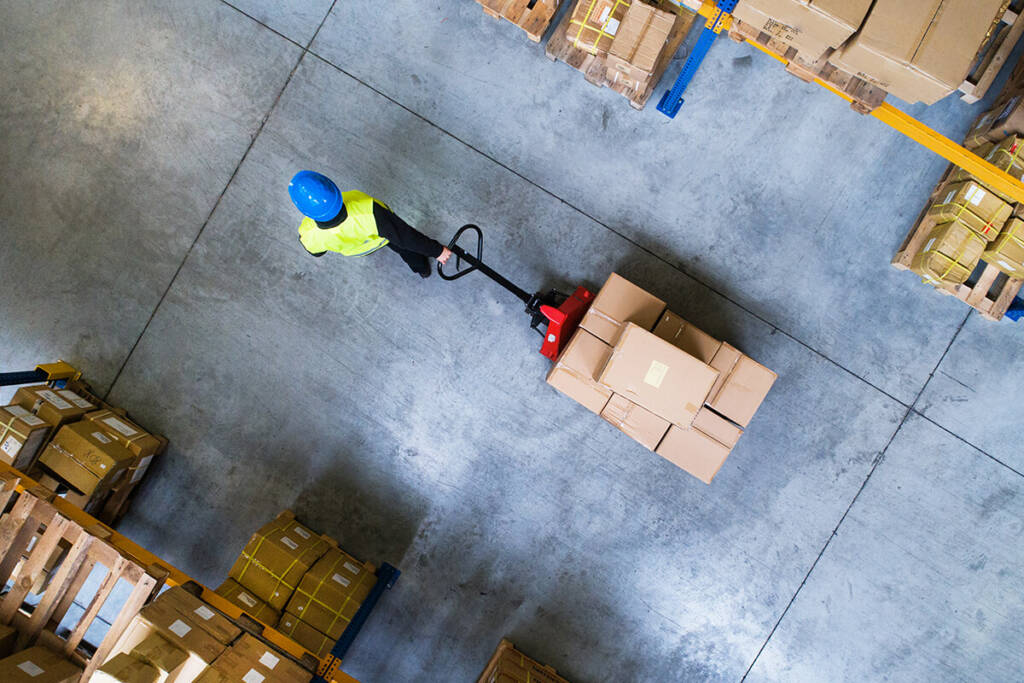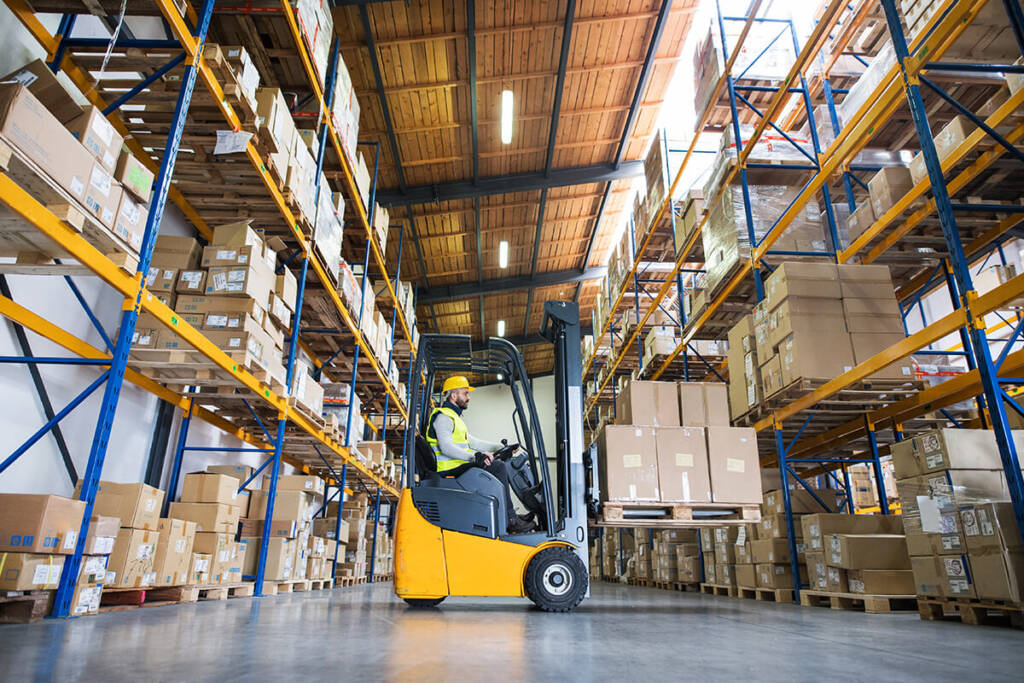
Every year, many serious injuries happen in warehouses, and a large portion of them come from poor pallet handling. This task may seem simple, but it can lead to costly problems. These include worker injuries, damaged goods, equipment breakdowns, and lower team morale. Thankfully, businesses are starting to shift toward smarter pallet handling. By using data and automation, they’re creating safer and more efficient workplaces.
From Injuries to Efficiency: Why Smarter Pallet Handling Pays Off
Using smart pallet handling techniques reduces risk and improves performance on the floor. Many workplace injuries are linked to poor lifting habits or unbalanced loads. Smart handling helps prevent these issues while making the entire process more efficient.
It also helps companies comply with safety regulations. In Canada and the U.S., employers must follow strict warehouse safety rules. By improving pallet handling, businesses can avoid costly violations, injury claims, and damaged inventory.
- Impact on Worker Safety
Proper techniques lower the chances of back injuries, joint strain, and muscle fatigue. Workers who are trained to lift, move, and store pallets correctly are far less likely to get hurt. Even a small change in posture or method can make a big difference in long-term safety. - Operational Efficiency
Pallets that are moved efficiently save time and reduce delays in order fulfilment. A well-organized flow of pallets, whether through manual handling or equipment, helps workers stay productive. It also reduces mistakes and keeps the workspace organized. - Compliance and Risk Reduction
Following proper handling techniques helps companies meet health and safety standards. It also minimizes the risk of fines or operational shutdowns due to accidents. Safer practices result in fewer insurance claims and improved team morale.
What Can Go Wrong When Pallets Are Handled Incorrectly
Understanding what can go wrong is the first step toward prevention. Many of the risks associated with pallet handling are preventable. Accidents usually happen due to carelessness, poor equipment use, or faulty pallets.
Recognizing these problems early allows for faster corrections. From muscle strain to falling loads, these risks need to be addressed before they escalate.
- Manual Lifting and Overexertion
Lifting heavy pallets by hand without training is a top cause of warehouse injuries. Overexertion from lifting, pushing, or pulling puts stress on the back and shoulders. This often leads to strains, sprains, or even long-term injuries. Improper lifting methods can create lifelong health issues for workers. - Poor Stacking and Load Instability
When pallets are stacked unevenly or too high, they can tip over without warning. This endangers workers and damages goods. Loose or unbalanced loads are especially dangerous in high-traffic areas. Proper stacking techniques must be part of every warehouse safety plan. - Forklift Misuse and Blind Spots
Forklifts are powerful machines, but if used carelessly, they pose serious threats. Carrying pallets with an obstructed view or making sharp turns can cause tip-overs or collisions. Blind spots increase the risk of striking shelving, walls, or coworkers. Safe driving practices are critical for forklift operators.

Smarter Ways to Move Pallets Without Hurting Yourself
Manual handling remains a key part of warehouse work. Even with machines available, many tasks still require human effort. Workers need the right training and habits to avoid injury.
Using smart techniques reduces strain and builds efficiency into everyday tasks. These simple steps help teams handle pallets safely and effectively.
- Use Proper Lifting Techniques
Lift using your legs, not your back. Start by bending at the knees and keeping your spine straight. Hold the pallet close to your body to reduce pressure on your lower back. Never twist your torso while lifting or carrying—turn your whole body instead. - Implement Team Lifting When Needed
If a pallet is too heavy or awkward, ask for help. Team lifting reduces the load on any one person. This not only lowers the chance of injury but also makes the lift more stable. Good coordination and communication are key when lifting together. - Use Pallet Jacks Correctly
Pallet jacks are helpful tools but require proper use. Make sure the floor path is clear before moving a load. Keep your hands and feet clear of the wheels at all times. When not in use, park the jack with the forks lowered to avoid tripping hazards. - Pre-Inspect Pallets Before Handling
Never handle a damaged pallet without checking it first. Look for cracked wood, exposed nails, or loose boards. These flaws can cause the pallet to break during transport. Remove or mark faulty pallets to keep them from entering circulation.

Safe Forklift Pallet Handling Practices
Forklifts are essential for heavy pallet handling but must be operated with precision. Errors in handling can lead to severe injuries or property damage. Safe practices help reduce these risks and improve control.
Drivers need to stay alert and follow guidelines at all times. Here’s how to keep forklift use safe and reliable.
- Load Evenly and Securely
When lifting pallets, always centre the load on the forks. Uneven weight causes instability, which increases the chance of tipping. Use stretch wrap or straps if the pallet contains loose boxes. A secure load keeps both the operator and others safe. - Maintain Clear Visibility
Keep loads at a low height while driving to see where you’re going. High loads reduce visibility and increase the risk of collision. If the load blocks your view, drive in reverse or ask for a spotter. Never guess—visibility is key to safety. - Drive at Controlled Speeds
Rushing with a forklift is dangerous. Slow down when making turns or moving through narrow aisles. Sudden stops or starts can shift the pallet or cause loss of control. Controlled speed ensures better handling and prevents accidents. - Regular Forklift Inspections
Before each shift, inspect the forklift for worn parts or fluid leaks. Check the brakes, steering, forks, tyres, and safety features. A malfunction during use can cause injury or equipment damage. Regular checks catch small issues before they become major problems.
Make Your Warehouse Work for You: Smart Layout Tips
The design of the warehouse affects how safely pallets are handled. A cluttered or poorly planned space leads to more accidents. On the other hand, a clean, organized space supports efficient movement.
Every part of the warehouse should support the safe handling of materials. These tips help create a workspace that protects both people and inventory.
- Keep Aisles Clear and Wide Enough
Aisles should be wide enough to allow safe movement of pallet jacks and forklifts. Clutter, tools, and stray pallets must be removed immediately. Crowded aisles make turning or stopping more difficult. Clean paths reduce collision risks and make work more efficient. - Use Anti-Slip Flooring and Clear Markings
Floors should offer good traction, especially in high-traffic areas. Anti-slip surfaces prevent falls even when floors are wet. Use clear floor markings to indicate where to walk, drive, or stack pallets. Visual guidance helps everyone stay within safe zones. - Optimize Pallet Storage Areas
Use racking systems that are strong enough to hold full pallets. Store heavier pallets on the bottom levels and lighter ones higher up. Avoid stacking beyond the recommended height. Stable storage helps prevent collapse and improves access.
From Training to Action: Keeping Safety Standards in Check
Training gives workers the knowledge they need to stay safe. But without supervision, even trained employees may cut corners. Consistent oversight helps maintain high safety standards.
When workers are supported, they perform better and avoid risky habits. Regular training and feedback are key.
- Conduct Regular Safety Training
Ongoing training keeps safety top of mind. Cover lifting techniques, proper equipment use, and emergency response. Update the sessions as new tools or policies are introduced. Training helps build good habits and reduces the chance of accidents. - Assign Supervisors to Monitor Compliance
Appoint supervisors to watch for unsafe practices. They should step in immediately if they see something unsafe. Real-time feedback helps workers correct mistakes. This keeps small issues from becoming serious problems. - Encourage Employee Feedback
Workers often notice risks before management does. Create a space where they can report concerns without fear. Feedback can lead to safety improvements that benefit everyone. Open communication builds a culture of shared responsibility.
The Role of Modern Tech in Preventing Pallet Injuries
Technology can make pallet handling more consistent and less risky. By reducing manual errors, it improves safety and productivity. Smart tools also help teams work faster without cutting corners.
These modern solutions are worth investing in for long-term gains.
- Automated Pallet Wrapping and Stackin
Machines that wrap and stack pallets reduce the need for manual labour. They make sure each load is secure and stable before moving. This lowers the risk of toppling during transport. It also keeps the wrapping process consistent for all loads. - Wearable Sensors and Safety Alerts
Sensors can track lifting posture and proximity to hazards. If a worker bends incorrectly, the system sends a gentle alert. This real-time feedback helps improve posture and avoid strain. Over time, it supports better movement patterns. - Fleet Management Software
Software can monitor forklift use, fuel levels, and maintenance needs. It helps plan repairs before a machine breaks down. This reduces the risk of accidents due to faulty equipment. Tracking also reveals patterns that can guide future improvements.
Take Warehouse Safety Further with Woodbridge Pallet
If you’re looking to improve how you handle pallets in Mississauga, Woodbridge Pallet offers strong, reliable solutions you can trust. We supply high-quality pallets that meet safety standards and support smooth operations across various industries. From custom builds to recycled options, our pallets are built for performance and durability. Let us help you raise your safety standards—call Woodbridge Pallet today at (905) 856-3332 to get started.
